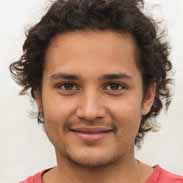Chapter 10 (Photosynthesis) Study Guide – Flashcards
Unlock all answers in this set
Unlock answersquestion
What are the products of the light reactions of photosynthesis that are used in the Calvin Cycle?
answer
ATP and NADPH
question
Where does the Calvin cycle take place?
answer
in the stroma of the chloroplast
question
When oxygen is released as a result of photosynthesis, it is a direct by-product of what?
answer
the splitting of water molecules
question
In the thylakoid membranes, what is the main role of the antenna pigment molecules?
answer
to harvest photons and transfer light energy to the reaction-center chlorophyll
question
Describe the functioning of photosystem II
answer
The electron vacancies in P680⁺ are filled by electrons derived from water
question
What are the products of linear photophosphorylation?
answer
ATP and NADPH
question
Where does the extra ATP come from for use in the Calvin Cycle?
answer
Cyclic electron flow
question
If the thylakoid is punctured and the interior is no longer separated from the stroma what process is most directly effected?
answer
the absorption of light energy by chlorophyll
question
What does the chemiosmotic process in chloroplasts involve?
answer
establishment of a proton gradient across the thylakoid membrane
question
If the interior of the thylakoids of isolated chloroplasts were made acidic and then transferred in the dark to a pH 8 solution what would be the result?
answer
The isolated chloroplasts would make ATP
question
In plant cells where are the ATP synthase complexes located?
answer
thylakoid membrane and inner mitochondrial membrane
question
In chloroplasts chemiosmosis translocates protons from where?
answer
no answer given must figure out
question
In photosynthetic cells, synthesis of ATP by the chemiosmotic mechanism occurs during when?
answer
Photosynthesis and respiration
question
What is the relationship between wavelength of light and the quantity of energy per photon?
answer
They are inversely related
question
Some photosynthetic bacteria have only photosystem I, whereas others have both photosystem I and photosystem II why might that be?
answer
Photosynthesis with only photosystem I is more ancestral
question
In thylakoids, protons travel through ATP synthatse from the thylakoid space to the stroma. Therefore, the catalytic "knobs" of ATP synthase would be located where?
answer
on the stromal side f the membrane
question
The reactions that produce molecular oxygen (O₂) take place where?
answer
In the light reactions alone
question
What is the primary function of the Calvin Cycle?
answer
synthesize simple sugars from carbon dioxide
question
In a plant leaf where do the reactions that produce NADH occur?
answer
neither the light reactions nor the Calvin cycle. They occur elsewhere
question
Where does the NADPH required fro the Calvin cycle come from?
answer
reactions initiated in photosystem I
question
What is the relationship between the light reactions and the Calvin cycle?
answer
The light reactions provide ATP and NADPH to the Calvin cycle, and the cycle returns ADP, Pi, and NADP⁺ to the light reactions.
question
The phylogenetic distribution of the enzyme rubisco is limited to?
answer
all known photoautorophs, both bacterial and eukaryotic
question
Photorespiration occurs when rubisco reacts RuBP with?
answer
O₂
question
Compared to C3 plants, C4 plants?
answer
can continue to fix CO₂ even at relatively low CO₂ concentrations and high oxygen concentrations.
question
When looking at a graph of absorption spectrum for chlorophyll a and the action spectrum for photosynthesis. Why would they be different?
answer
Because other pigments absorb light in addition to chlorophyll a
question
What wavelength of light is most effective in driving photosynthesis? 730mm, 475 mm, 420mm, 575mm, 625mm?
answer
420 mm is most effective
question
The light reactions of photosynthesis supply the Calvin cycle with what?
answer
ATP and NADPH
question
What is the representation of the flow of electrons during photosynthesis?
answer
H₂O to NADPH to Calvin cycle
question
What process is most directly driven by light energy?
answer
Removal of electrons from chlorophyll molecules



